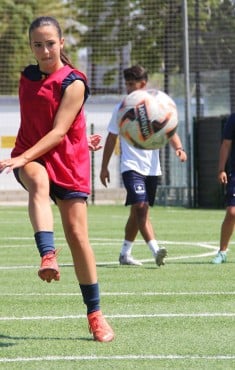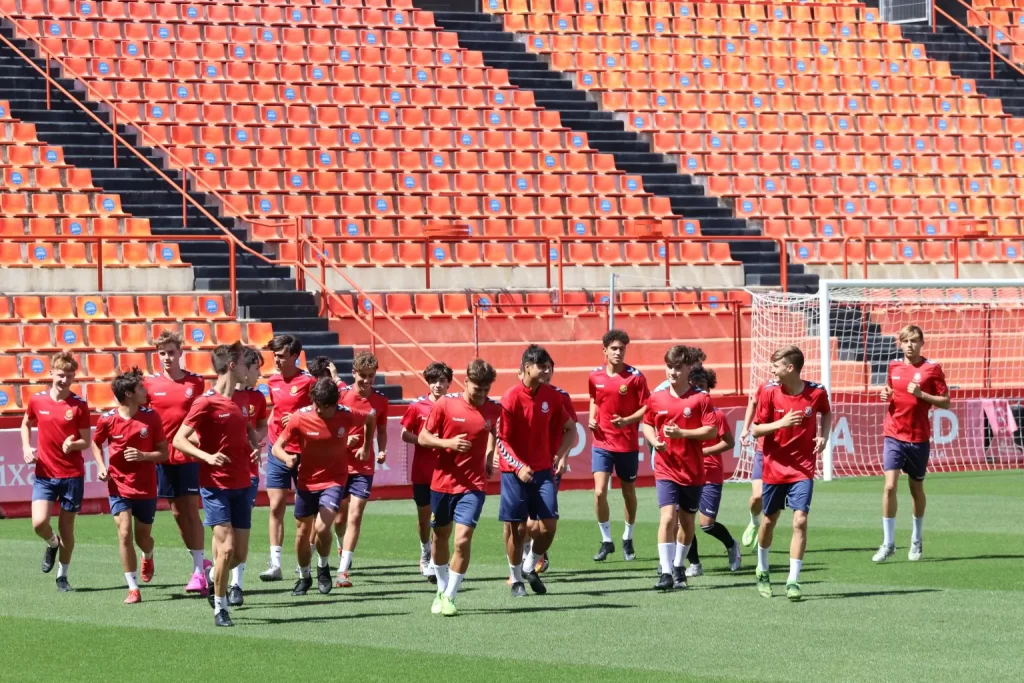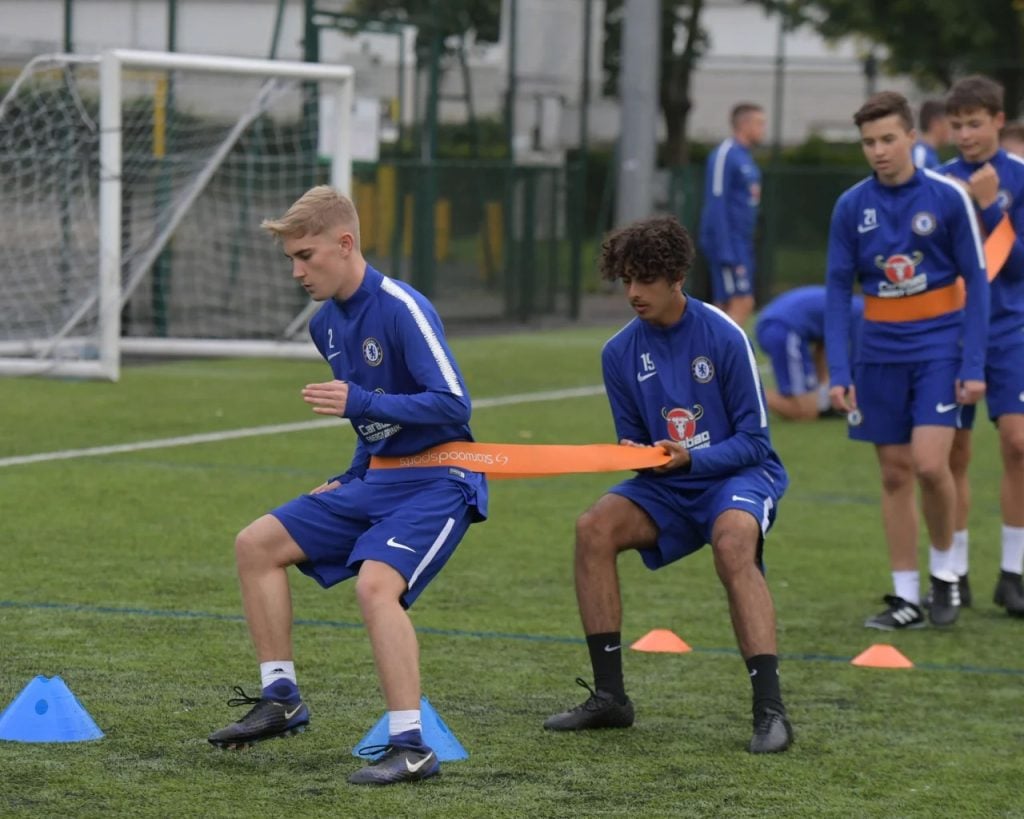Table of Contents
But how did it get here? When did it all begin? And most importantly, what still needs to be done for women’s soccer to reach its full potential? Join us on this journey through the history of women’s soccer, its evolution in recent years and the opportunities that are transforming the future of the sport.
History and first steps of women’s soccer
If you think women’s soccer is a recent development, think again. The sport has more than a century of history, although its path has been littered with obstacles.
In 1894, British activist Nettie Honeyball founded the British Ladies Football Club, the world’s first women’s soccer team. Shortly afterwards, in 1895, the first official match was played in front of 10,000 spectators. A promising start, wasn’t it?
But then came the veto. In 1921, the Football Association (FA) in England banned women’s soccer, claiming that it was “unsuitable for women”.
This blockade not only halted its growth in the UK, but also influenced other federations around the world.
However, women’s soccer did not disappear. During World War I, women working in factories began to play recreationally, keeping the sport alive. And although recognition was slow in coming, their passion never disappeared.
Interesting fact: If you’ve ever wondered “who was the first woman to play soccer?”, the answer is not entirely clear.
There are records of women playing in different parts of the world since the 19th century, but no official documentation. However, figures such as Nettie Honeyball were key in the struggle for recognition.
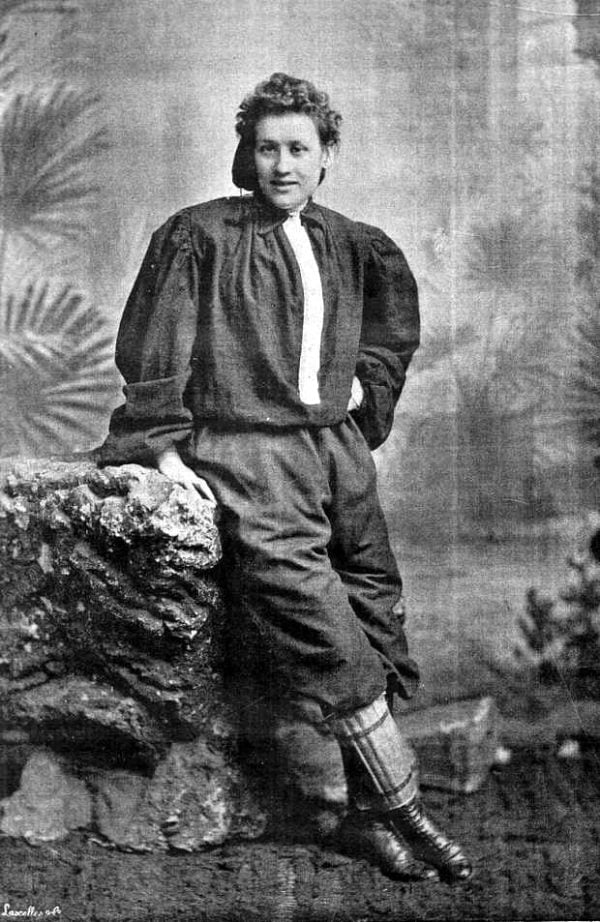
when did women’s soccer as we know it begin?
The real breakthrough for women’s soccer came in the 1970s and 1980s, when federations finally began to recognize its existence.
- In 1970, the International Women’s Football Federation was created in Italy, organizing the first international tournaments.
- In 1971, Mexico hosted the first unofficial World Cup, with full stadiums and a final that attracted more than 100,000 spectators.
- In 1991, FIFA organized the first official women’s World Cup in China. The United States took the title and the tournament marked a before and after.
- In 1996, women’s soccer made its debut at the Atlanta Olympics, establishing itself as a top-level discipline.
Despite these advances, for many years the boom in women’s soccer was slow, facing a lack of investment, less media coverage and economic inequalities compared to men’s soccer.
when did women’s soccer start in Spain?
Spain has not been an exception in this difficult journey. Although women’s soccer began to be practiced in the 1960s and 1970s, the Royal Spanish Football Federation did not officially recognize the women’s national team until 1983.
Before that, Spanish players played matches and tournaments without institutional backing, often paying for their own travel and uniforms. Worst of all, those who represented Spain before that date are still not officially recognized.
But, as in the rest of the world, change was unstoppable:
- In 2011, the Primera División Femenina (now known as Liga F) was established as Spain’s top league.
- In 2022, the league was recognized as professional, improving conditions for female players.
- Teams like FC Barcelona Femení have achieved attendance records, such as a full Camp Nou with 91,648 spectators in 2022.
Today, Spain not only has a competitive league, but has developed international stars such as Alexia Putellas, who made history by winning the Ballon d’Or in 2021 and 2022.
Despite these advances, women’s soccer in Spain continues to struggle for better salaries, more investment and greater visibility in the media.
The growth of women’s soccer in recent years
What once seemed like a distant dream is now a reality: women’s soccer is currently at its best.
Women players are no longer invisible. They now fill stadiums, star in commercials and are a reference for thousands of girls who want to follow in their footsteps. The professionalization of the leagues, the increase in media coverage and the support of brands and sponsors have completely changed the panorama.
While two decades ago it was difficult to watch a women’s game on television, today major competitions such as the Women’s Champions League or the World Cup are followed by millions of viewers around the world.
Key factors that have driven their growth
But how did we get here?
The boom in women’s soccer has not happened by chance. Behind this growth are several factors that have changed the rules of the game.
Greater visibility in the media and social networks
For years, the lack of media coverage was one of the biggest barriers to the development of women’s soccer. Without visibility, there were no sponsors, and without sponsors, there was no investment.
But this has changed. The major networks have begun to broadcast more matches, and streaming platforms such as DAZN have bet heavily on the women’s Champions League.
In addition, social networks have been key. Today, players no longer rely on traditional media to connect with their followers. Through Instagram, TikTok and Twitter, they can tell their stories, generate impact and become global idols.
Case in point: Megan Rapinoe, one of the world’s most influential female players, has used her voice not only to talk about soccer, but also to advocate for gender equality and inclusion in sport.
Big clubs and federations are taking a gamble
A few years ago, most women’s teams survived on limited resources. Today, the big clubs have understood that women’s soccer is a profitable bet on the future.
Historic clubs such as Real Madrid, FC Barcelona, Chelsea and Manchester City have invested in their women’s sections, improving facilities, signing great players and making their projects more professional.
In addition, international federations have taken steps to promote women’s soccer. FIFA and UEFA have increased prize money in their tournaments, and the International Olympic Committee has reinforced its commitment to equality in sport.
Key fact: In 2022, UEFA doubled the prize money for the Women’s European Championship, allowing female players to receive better conditions.
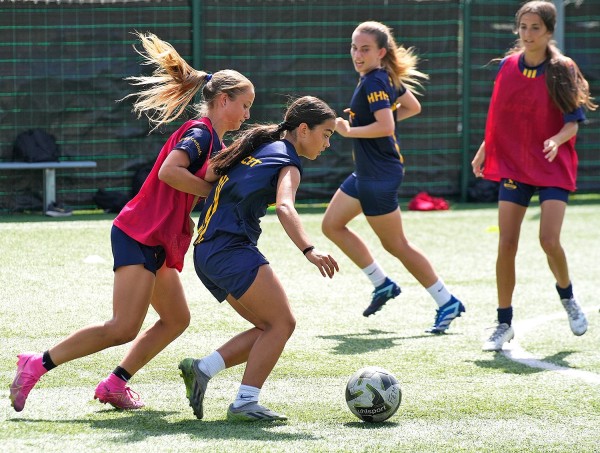
More investment in infrastructure and training
The future of women’s soccer is not only played out in the elite stadiums, but also on the pitches where the new generations train.
In recent years, there has been significant growth in the creation of women’s soccer schools and specialized academies. More and more girls have access to professional training from a young age, something that previously only happened in men’s soccer.
In addition, girls’ soccer camps have been key to offering high-performance experiences, with quality training and the chance to learn from expert coaches.
Impact on major competitions
If there is one thing that has accelerated the growth of women’s soccer in recent years, it is the strength of major competitions. Not only have they raised the level of the game, but they have captured the attention of the public and the media like never before.
Today, the World Cup, the Women’s Champions League and the Olympic Games are events that generate audiences in the millions and unforgettable moments.
The Women’s Champions League and its role in professionalization
For a long time, women’s clubs had local tournaments with hardly any international repercussions. But everything changed with the arrival of the UEFA Women’s Champions League, which has taken women’s club soccer to another level.The tournament has not only allowed the world’s best players to play against each other, but has also generated historic moments, such as the semi-final between FC Barcelona and Wolfsburg in 2022, with 91,648 fans at the Camp Nou.
The key fact: The Women’s Champions League has made club soccer as attractive as the national teams, with the likes of Barcelona, Lyon and Chelsea dominating the international scene.
Women’s World Cup as a major catalyst for change
If there is one tournament that has changed the history of women’s soccer, it is the FIFA Women’s World Cup.
Since its first official edition in 1991, the tournament has grown exponentially in audience, participation and competitive level.
- In 1991, only 12 teams contested the first World Cup in China.
- In 2019, the World Cup in France broke all records with more than one billion viewers worldwide.
- In 2023, the tournament expanded to 32 teams, matching the format of the men’s World Cup.
This growth has made the World Cup one of the most watched competitions on the planet, with matches that surpass traditional men’s sporting events in terms of viewership.
Shocking example: the 2019 World Cup final between the United States and the Netherlands had more viewers in the U.S. than the men’s Gold Cup final that same year.
Opportunities for future female players
The boom in women’s soccer has not only brought full stadiums and more visibility, it has also opened doors for new generations.
Today, girls who dream of becoming soccer players have more options than ever to train and grow in the sport.
Where once it was difficult to find women’s teams at local clubs, there are now academies, soccer schools and programs designed specifically for girls who want to develop in the sport.
But what is the best path for a female player who wants to improve her level and have opportunities in professional soccer? Let’s break it down.
How access to soccer has changed for girls and young women
Not so long ago, a girl who wanted to play soccer had to train with men’s teams because there were hardly any female options. But in recent years, things have changed dramatically.
Some of the most important developments are:
- More clubs have created women’s sections in all age groups.
- Women’s grassroots leagues have been developed, allowing girls to compete from a young age.
- There are more sports scholarships for female players at universities and high-performance academies.
Today, a young female soccer player can follow different paths depending on her level and aspirations. Some opt for professional club academies, while others seek opportunities with teams in the United States or Europe, where women’s soccer is already established.
The United States remains the country with the most developed system, with university scholarships allowing many players to combine studies and soccer at a high level.

But universities are not the only option. More and more players are opting for specialized programs that prepare them both technically and tactically.
The role of women’s soccer camps and academies
For many young female players, girls’ soccer camps are the first big step in honing their talents and experiencing a high-level soccer experience.
These programs allow them to train with professional coaches, improve their technique and compete with players from different countries. In addition, in many cases, the camps serve as a platform for attracting talent and connecting with clubs or universities.
Some of the key benefits of women’s soccer camps are:
- Intensive training with qualified coaches.
- Opportunity to develop tactical and technical skills.
- Professional environment, with top-notch facilities.
- Connection with scouts and clubs looking for promising new players.
While not all players who go through these programs go on to professional soccer, the camps offer an enriching training experience and can be a springboard for future opportunities.
Case in point: Many elite players, such as Alexia Putellas and Sam Kerr, have gone through academies and high-performance programs before making the leap to professional soccer.
If your daughter dreams of playing soccer in a professional environment, a girls’ soccer camp may be the ideal place to nurture her talent and bring her closer to new opportunities.
The future of women’s soccer: What’s next?
The road travelled has been impressive, but women’s soccer today still has challenges ahead. Although female players have gained visibility, respect and better conditions, the gap with the men’s game remains in many respects.
Remaining challenges
- Pay gap and working conditions: Despite progress, female players are still paid much less than their male counterparts. In some leagues, the differences are abysmal, and many female soccer players still have to combine their careers with other jobs.
- Greater investment in emerging leagues: While in countries such as the United States, Spain and England women’s soccer is consolidated, in other parts of the world it still struggles to secure sponsors, better infrastructure and greater institutional support.
- Equality in media coverage: Although more and more matches are being broadcast, there is still a huge difference in the amount of broadcast hours and analysis compared to men’s soccer.
However, if there is one thing that women’s soccer has shown, it is that its growth is unstoppable. Every barrier that has been broken down has led to new opportunities, and the future is brighter than ever.
Projected growth
- More professional leagues are expected to be established in countries where women’s soccer is still developing.
- Prize money in international tournaments will continue to increase.
- Academies and training clubs will continue to grow, allowing more girls to have access to quality training.
Make women’s soccer an opportunity for the future with Ertheo
Women’s soccer is experiencing its best moment ever, and the opportunities for the new generations have never been wider. Whether it’s at the professional level or simply as an enriching experience, more and more girls have access to training programs that didn’t exist before.
If your daughter or someone you know dreams of playing soccer, now is the ideal time to support her along the way. There are academies and camps specifically designed to help young soccer players improve their technique, learn from professional coaches and live a unique experience within the sport.
Check out our training options and discover how Ertheo’ s programs can be the springboard for your development in women’s soccer.
The future of women’s soccer doesn’t stand still, and you can be a part of it.

